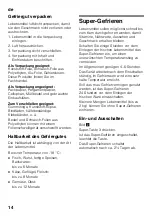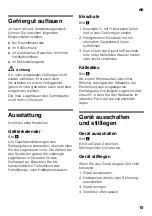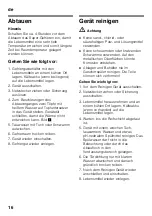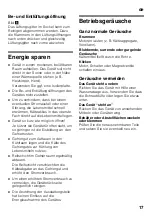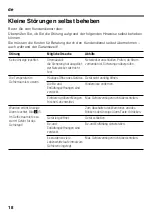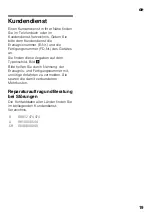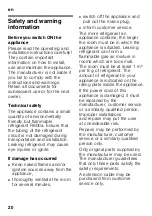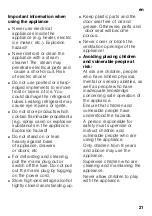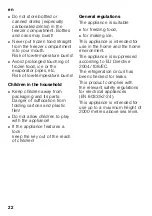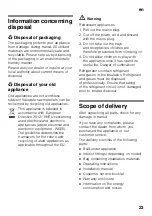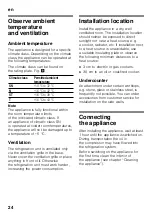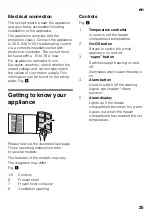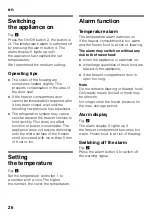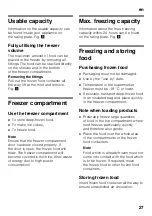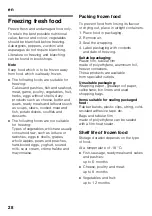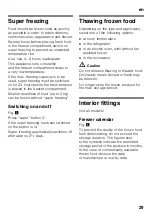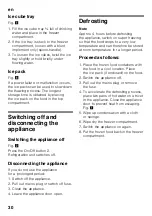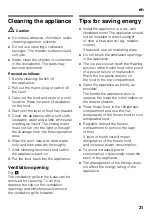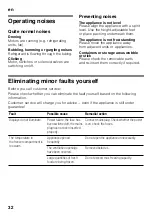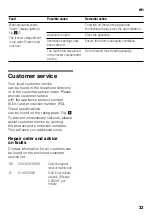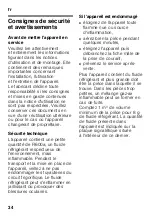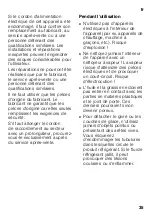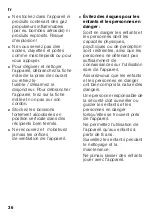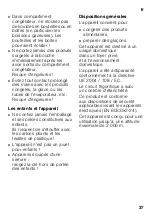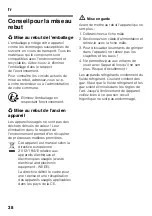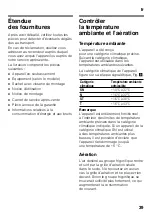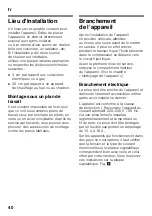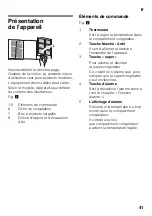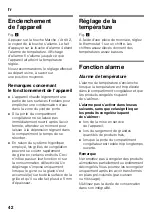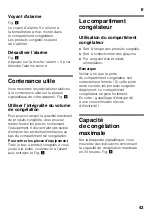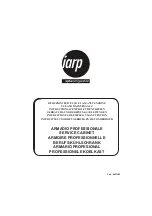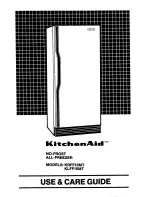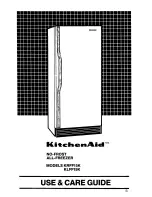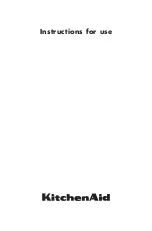
en
28
Freezing fresh food
Freeze fresh and undamaged food only.
To retain the best possible nutritional
value, flavour and colour, vegetables
should be blanched before freezing.
Aubergines, peppers, zucchini and
asparagus do not require blanching.
Literature on freezing and blanching
can be found in bookshops.
Note
Keep food which is to be frozen away
from food which is already frozen.
■
The following foods are suitable for
freezing:
Cakes and pastries, fish and seafood,
meat, game, poultry, vegetables, fruit,
herbs, eggs without shells, dairy
products such as cheese, butter and
quark, ready meals and leftovers such
as soups, stews, cooked meat and
fish, potato dishes, soufflés and
desserts.
■
The following foods are not suitable
for freezing:
Types of vegetables, which are usually
consumed raw, such as lettuce or
radishes, eggs in shells, grapes,
whole apples, pears and peaches,
hard-boiled eggs, yoghurt, soured
milk, sour cream, crème fraîche and
mayonnaise.
Packing frozen food
To prevent food from losing its flavour
or drying out, place in airtight containers.
1. Place food in packaging.
2. Remove air.
3. Seal the wrapping.
4. Label packaging with contents
and date of freezing.
Suitable packaging:
Plastic film, tubular film
made of polyethylene, aluminium foil,
freezer containers.
These products are available
from specialist outlets.
Unsuitable packaging:
Wrapping paper, greaseproof paper,
cellophane, bin liners and used
shopping bags.
Items suitable for sealing packaged
food:
Rubber bands, plastic clips, string, cold-
resistant adhesive tape, etc.
Bags and tubular film
made of polyethylene can be sealed
with a film heat sealer.
Shelf life of frozen food
Storage duration depends on the type
of food.
At a temperature of -18 °C:
■
Fish, sausage, ready meals and cakes
and pastries:
up to 6 months
■
Cheese, poultry and meat:
up to 8 months
■
Vegetables and fruit:
up to 12 months
Summary of Contents for G4344X8
Page 83: ... S 1 3 5 7 1 2 3 5 4 ...
Page 84: ... 2 6 4 8 ...

